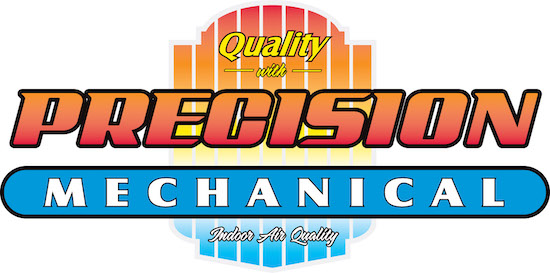
When searching for a heating and cooling system for your dwelling, it’s crucial to choose one that balances efficiency, operation and the impact on your wallet. That’s why many families use mini-splits for comfort in their home.
Mini-splits—often known as ductless mini-splits—provide several advantages that make them a popular option for both homes and businesses. They're highly energy efficient, reducing energy consumption and saving on utility costs, because they eliminate the energy losses associated with the ductwork found in traditional HVAC systems. They also enable users to customize the temperature in each room, boosting overall comfort while not wasting energy.
If you’re considering mini-split installation in Rapid City, it’s worthwhile to first find out if these devices are the right solution for your living situation. Here, we’ll examine how mini-splits measure up to other heating and cooling systems.
What a Mini-Split Is and How It Works
A mini-split, or ductless mini-split, is a heating and cooling device that doesn't need ductwork to function. It's a good option in homes that don't have pre-existing air ducts and for homes with rooms that aren’t served well by the home's existing HVAC system.
A mini-split system has two main components: an outdoor compressor/condenser and an indoor air-handling unit. These are linked by a conduit containing the power cable, refrigerant tubing, suction tubing and a condensate drain.
Here's how it works: the outside compressor circulates the refrigerant necessary for heat exchange through the coils and the air handler. The interior device draws in air from the room, cools or heats it over the coils and pushes the conditioned air back into the room.
Mini-Split vs. Central Air
Mini-splits offer targeted cooling in particular rooms or zones of your residence. They are known for energy efficiency because they only heat or cool the areas you want. However, they sometimes don't blend seamlessly into every decor due to their wall-mounted indoor units.
Conversely, a central air system uniformly chills your entire home, generating consistent comfort levels throughout. Its ductwork is hidden away, preserving the aesthetics of your home. However, it might not be as energy efficient as a mini-split, especially in bigger homes or residences where certain spaces may not need nonstop conditioning.
Mini-Split vs. Window AC/Window Unit
Mini-splits are often more energy efficient and less noisy than a window air conditioning unit and are capable of cooling multiple rooms. This is why mini-splits are a convenient option for numerous homeowners. They also use a form of refrigerant that is more environment-friendly, decreasing their environmental impact. These units can even add value to your home due to their durable nature and exceptional cooling capabilities. However, they come with a greater purchase price.
On the other hand, window AC units are less expensive initially. They may be a good fit for homes that are not able to accommodate a central Air conditioning system or for families with budget constraints. Even with these advantages, window units can use up to 40% more energy than ductless mini-split systems and are often noisier.
Mini-Split vs. Portable AC
The answer to what is better, a ductless mini-split or a portable air conditioning unit, will depend on on your priorities. If your main worries are energy efficiency and ability to quickly cool a room, a mini-split is considered far superior to a portable AC unit. However, if funding is a key concern, a portable AC is less expensive.
Mini-Split vs. Gas Furnace
Deciding between a mini-split system and a gas furnace depends on a range of factors which can include the climate in your city, home size, energy efficiency needs and how much you plan on spending.
A mini-split system most of the time is more energy efficient than a gas furnace. It can heat and cool targeted areas in your home, supplying custom climate control in specific rooms. Mini-splits also are for the most part quieter and have a higher up-front cost, but their operating costs are usually less due to their greater energy efficiency.
However, a gas furnace can be a very effective heating source, particularly in colder climates where mini-split heat pumps may fail to maintain comfort levels in the bitter cold. Although they are less energy efficient than mini-splits, gas furnaces likely are not as expensive. However, their operating costs can be greater, especially if natural gas prices skyrocket.
Mini-Split vs. Heat Pump
Mini-splits and heat pumps function with the process of heat transfer. They are both energy efficient, but a heat pump's ductwork can be less efficient. This difference aside, the choice between a mini-split and a heat pump often depends on a family's needs and circumstances.
By way of example, if you live in a warmer climate and mostly need cooling, a mini-split system might be a more effective choice. However, if you require both heating and cooling and already have ductwork installed in your residence, a heat pump may be a more efficient option.
Mini-Split vs. Space Heater
In regards to heating and cooling a household, mini-splits and space heaters each have strengths and weaknesses. However, for total efficiency, versatility, comfort and safety, mini-splits outperform space heaters. Mini-splits supply superior energy efficiency due to the fact they deliver conditioned air straight to different zones and can serve several rooms at once.
Space heaters are far less expensive to buy but are typically reserved for heating a limited area or an individual room. They also can be less energy efficient. Unlike mini-splits, space heaters do not provide cooling. The most significant drawback for space heaters is the risk of fire. Authorities say some 1,700 fires each year involve space heaters.













